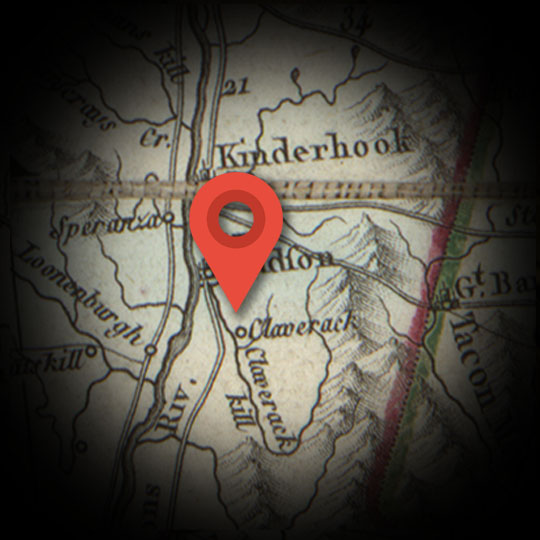CLAVERACK
Explore
[Claverack, NY]
Though it existed as a place-name throughout the Dutch and English Colonial periods of eastern New York State, Claverack was founded as a town in 1788.
A rich, well-wooded and -watered area, at the beginning of the 19th Century, Claverack was known for a number of popular taverns and inns. It lied adjacent, after all, to much-travelled routes spanning New York City and Albany to the north and south, and Boston and the Connecticut River Valley to the east. And, like much of the Hudson Valley, this was northern land where slavery was established and legal. This ended gradually after New York State passed emancipation in 1799.
Claverack had been held since the 1630s by the sprawling and aristocratic Van Rensselaer family. There were extensive ties between the Van Rensselaers and Alexander Hamilton’s adopted family, the Schuylers, including marriages between members of the two lineages. In addition, the food supply for the army forces serving under General Philip Schuyler during the early part of the Revolutionary War was all raised on Claverack Manor.
Claverack stands less than ten miles from where New York meets Massachusetts. And like many other states, New York and Massachusetts faced considerable conflict settling their precise borders with one another.
According to county histories, this was the cause of endless headaches for members of the Claverack branch of the Van Rensselaer family, like John Van Rensselaer. Enslaved people alone did not meet the Van Rensselaer’s labor needs, as they wished to have their extensive lands planted, harvested, timbered and improved.
So, lacking adequate volunteers locally, in the 1700s John Van Rensselaer had put out a call for Massachusetts citizens to come occupy his lands, and live there as tenants. Some of these Massachusetts immigrants settled the Claverack area without leases—and, later, refused to accept written lease leases when the Van Renesselears tried to force such agreements on them.
The difficulty of adjudicating the jurisdiction of these claims—that is, under Massachusetts law or New York law—could only have added to the inopportuneness of the legal issues for both landlord and tenants.
Alexander Hamilton traveled to Claverack in mid-October, 1803. He had been hired by John Van Rensselaer’s heirs to sue a number of these problematic Claverack residents.
Hamilton remained in the area, it would seem, for a number of weeks, traveling between various Van Rensselaer real estate holdings and Albany.
During this period, Hamilton took sick for a brief while. On October 27, 1803, he wrote his wife, Elizabeth, “It is with great pleasure I am able to inform my beloved Eliza that I continue to progress in convalescence.”

TIME FRAME:
October, 1803
